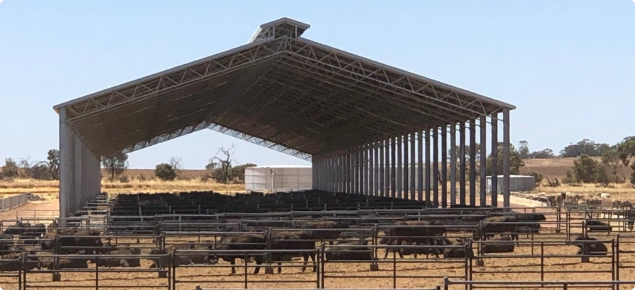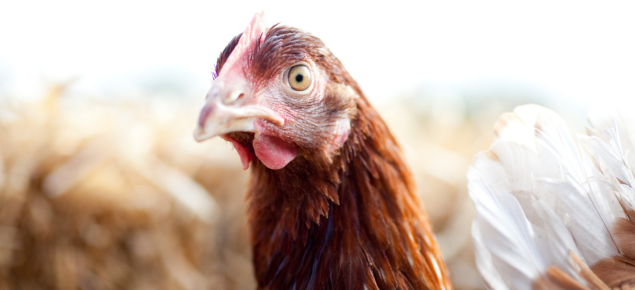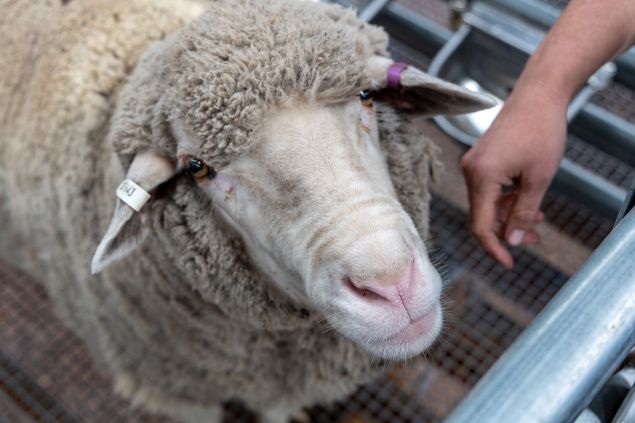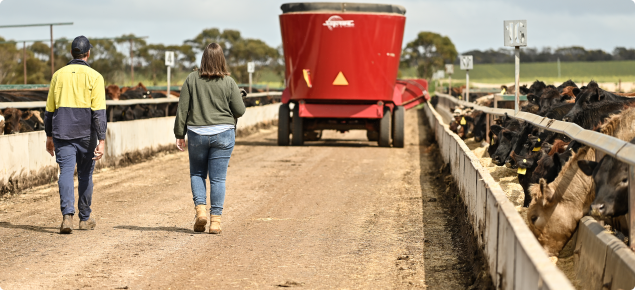Creating a stronger, more resilient sheep industry and supply chain for WA
As part of the Australian Government's $139.7 million transition assistance package, the Supply Chain Capacity Program will assist WA sheep producers and supply chain businesses to adjust to the cessation of live sheep exports by sea and moderate the impact of the change.
There are options for the intensification of sheep for finishing, such as finishing in a paddock or finishing in a feedlot. Use the tools below to determine the best option for your situation.
Best practice for the design, construction and operation of sheep feedlots
Support for new or expanding agribusiness in Western Australia
Starting or expanding an agribusiness may involve approvals or licences, which can be complex. The department provides regulatory and technical support, with early engagement recommended to support effective planning.
Regulatory Support
If works approvals and/or licence from the Department of Water and Environmental Regulation is required, including approvals to construct and operate a facility, the department can support with:
-
identifying the necessary approvals and explaining the regulatory process
-
connecting you with the appropriate regulatory contacts
-
reviewing applications to help ensure all requirements are addressed before submission.
Technical advice
Considering the sensitivity of the surrounding environment and related industry standards is essential when siting, designing and operating an agribusiness facility. The department can assist with:
-
assessing suitable locations, including infrastructure access and required separation distances
-
advising on facility design, including production pens, containment infrastructure, and construction specifications
-
supporting operational planning, such as waste management and nutrient budgeting.
Use the menu below to explore key industry information.

Thereare several key principles that must be considered when constructing a new, or expanding an existing, cattle feedlot in Western Australia.
Design considerations
-
Separation distances should be calculated using industry guidelines to minimise impacts on nearby sensitive areas.
-
Wastewater must be contained, typically using drains and ponds, to protect surface water.
-
An impermeable liner beneath feedlot infrastructure is recommended to safeguard groundwater.
-
Clearing requirements should be checked on the WA State Government website if vegetation removal is planned.
Regulatory obligations
Feedlots with a design capacity of 500 head or more require a works approval and licence from the Department of Water and Environmental Regulation (DWER). All feedlots, regardless of size, also require planning approval from the local Shire or City. It’s recommended to speak with your local Planning Officer early and to request a scoping meeting with DWER to ensure your proposal is on the right track.
Industry guidelines and additional resources for cattle feedlots
- National Beef Cattle Feedlot Environmental Code of Practice
- National Guidelines for Beef Cattle Feedlots in Australia
- Agribusiness Development Guideline: How to Prepare a Solid Waste Management Plan (341 KB)pdf
- Agribusiness Development Guideline: Land Application of Solid Animal By-Products (343 KB)pdf
- Beef Cattle Feedlots: Design and Construction
- Beef Cattle Feedlots: Waste Management and Utilisation
- Model Code of Practice

There are several key principles that must be considered when constructing a new, or expanding an existing, piggery in Western Australia.
Design considerations
-
Separation distances should follow industry guidelines to minimise impacts on nearby sensitive areas.
-
Wastewater from indoor piggeries must be contained, typically using drains and ponds, to protect surface water.
-
An impermeable liner beneath piggery infrastructure is recommended to safeguard groundwater.
-
Clearing requirements should be confirmed via the WA State Government website if vegetation removal is proposed.
Regulatory obligations
Piggeries with a design capacity of 500 head or more require a works approval from DWER. Operations with 500 – 1,000 head must be registered, while those with over 1,000 head require a licence to operate.
Piggeries of any size require planning approval from the local Shire or City. it’s recommended to review additional information on the DWER process and arrange a scoping meeting with DWER to support siting, design, and operational planning.
Industry guidelines and additional resources
- National Environmental Guidelines for Indoor Piggeries (NEGIP)
- National Environmental Guidelines for Rotational Outdoor Piggeries (NEGROP)
- Model Code of Practice for the Welfare of Animals: Pigs
- Agribusiness Development Guideline: How to Prepare a Solid Waste Management Plan (341 KB)pdf
- Agribusiness Development Guideline: Land Application of Solid Animal By-Products (343 KB)pdf
Other resources that can assist you in planning and operating your facility

There are several key principles that must be considered when constructing a new, or expanding an existing, meat chicken operation in Western Australia.
Design considerations
-
Separation distances should follow industry guidelines to minimise impacts on nearby sensitive areas.
-
Wastewater from indoor operations must be contained, typically using drains and ponds, to protect surface water.
-
An impermeable liner beneath infrastructure is recommended to safeguard groundwater.
-
Clearing requirements should be confirmed via the WA State Government website if vegetation removal is proposed.
Regulatory obligations
Meat chicken operations of any size require planning approval from the local Shire or City. It’s recommended to speak with your local Planning Officer early to understand specific requirements.
Industry guidelines and additional resources
- Planning and environment guideline for establishing meat chicken farms: Guide 1 – Assessment Guide
- Planning and environment guideline for establishing meat chicken farms: Guide 2 – Applicant guide
- National Animal Welfare Standards for the Chicken Meat Industry
- National Animal Welfare Standard for the Chicken Meat Industry – Guidance
- Industry best management practice welfare manual
- How to Prepare a Solid Waste Management Plan (341 KB)pdf
- Land Application of Solid Animal By-Products (343 KB)pdf
- Regulations
- Poultry Standards

There are several key principles that must be considered when constructing a new, or expanding an existing, egg layer operation in Western Australia.
Design considerations
-
Separation distances should follow egg industry guidelines to minimise impacts on nearby sensitive areas.
-
Wastewater must be contained, typically using drains and ponds, to protect surface water.
-
An impermeable liner beneath indoor infrastructure is recommended to safeguard groundwater.
-
Clearing requirements should be confirmed via the WA State Government website if vegetation removal is proposed.
Regulatory obligations
Egg layer operations of any size require planning approval from the local Shire or City. Early contact with the Planning Officer is recommended to understand local requirements and support effective planning.
Industry guidelines and additional resources
- Egg Industry Environmental Guidelines (Australian Eggs)
- National Farm Biosecurity Technical Manual for Egg Production
- Agribusiness Development Guideline: How to Prepare a Solid Waste Management Plan (341 KB)pdf
- Agribusiness Development Guideline: Land Application of Solid Animal By-Products (343 KB)pdf
- Regulations
- Egg Standard (Food Standards Australia/New Zealand)

There are several key principles that must be considered when constructing a new, or expanding an existing, sheep feedlot in Western Australia.
Design considerations
-
Separation distances should follow sheep feedlot guidelines to minimise impacts on nearby sensitive areas.
-
Wastewater must be contained, typically using drains and ponds, to protect surface water.
-
An impermeable liner beneath feedlot infrastructure is recommended to safeguard groundwater.
-
Clearing requirements should be confirmed via the WA State Government website if vegetation removal is proposed.
Regulatory obligations
Sheep feedlots with a design capacity of 10,000 head or more require a works approval and licence to operate from DWER. It’s recommended to review additional information on the DWER process and request a scoping meeting to support siting, design, and operational planning. Feedlots of any size also require planning approval from the local Shire or City, so early contact with the Planning Officer is encouraged.
Industry guidelines and additional resources
Development guidelines
- Site Assessment for Waste Irrigation (730 KB)pdf
- Suitability of Liquid Waste for Irrigation (518 KB)pdf
- Sizing a Waste Irrigation Area (443 KB)pdf
- Preparing a Solid Waste Management Plan (341 KB)pdf
- Land Application of Solid Animal By-Products (343 KB)pdf
- NIMP Example (Liquid waste) (880 KB)pdf
- Melville Park tech trial summary (402 KB)pdf
Contact us
-
Agribusiness Development

